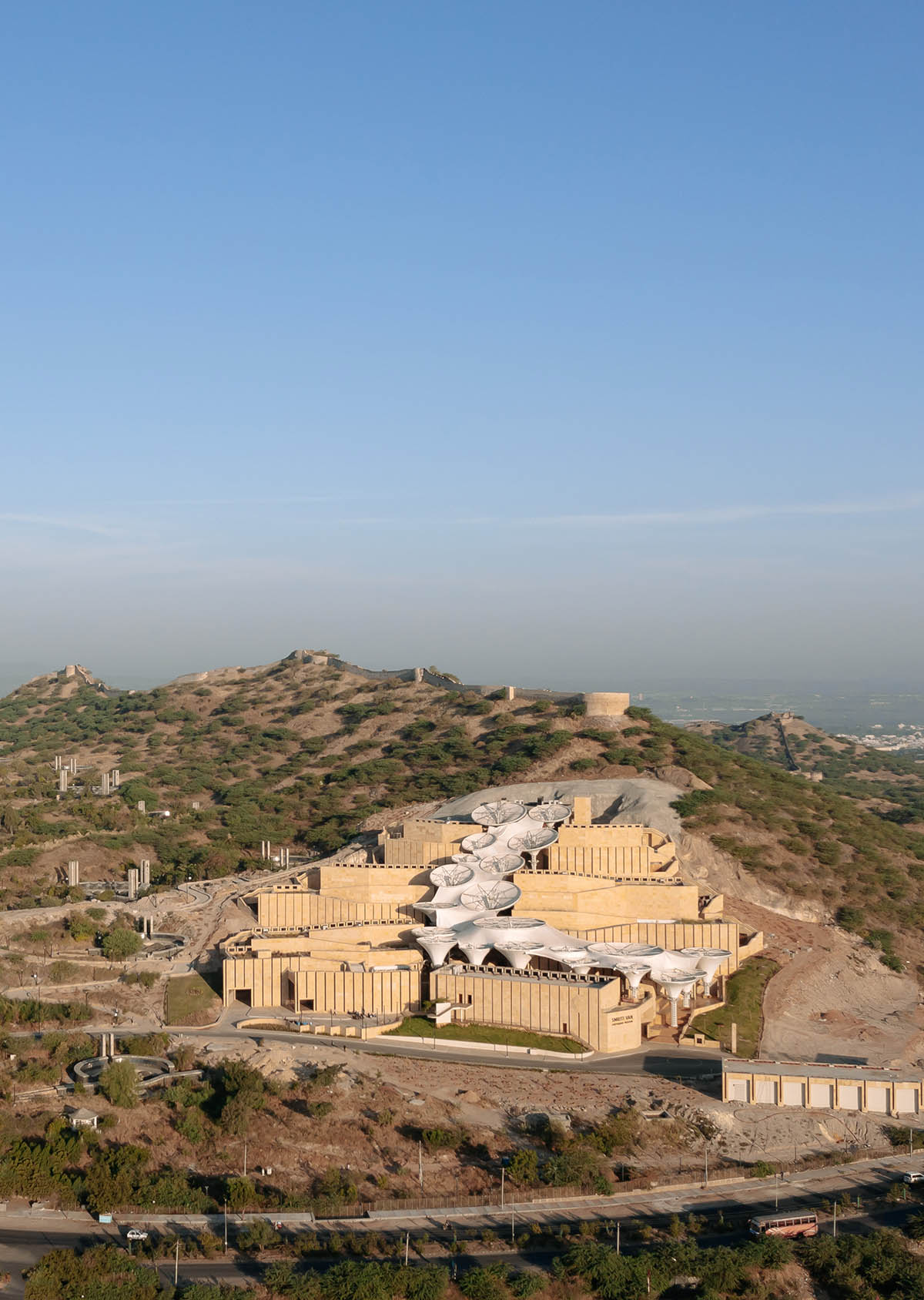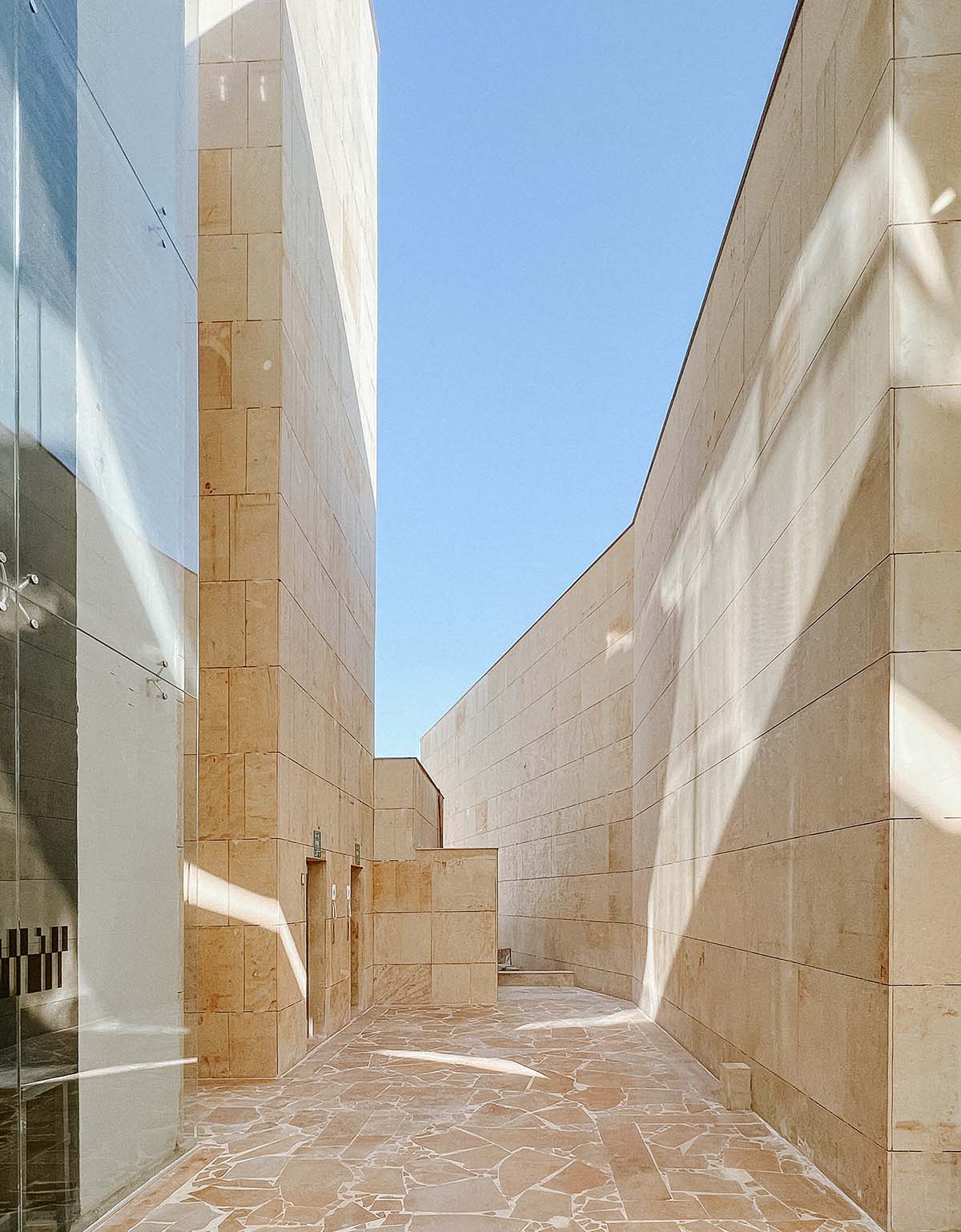Submitted by WA Contents
Vastushilpa Sangath softens monolithic museum with a funnel-shaped central passage in India
India Architecture News - Apr 20, 2023 - 10:12 3711 views
The rigid volume of the museum is softened by a funnel-shaped tensile structure, providing a central passage and creating a tufty main axis throughout the museum in Bhuj, India.
Located on the Bhujiyo hill in Bhuj, Gujarat, the museum was designed by Vastushilpa Sangath LLP formerly known as Vastushilpa Consultants, a firm founded by the 2018 Pritzker Architecture Prize Laureate Balkrishna Doshi.
Named Smritivan Earthquake Memorial Museum, the museum, covering a total of 10,900 square meters, features a series of galleries in both sides of the museum.
The museum is a part of the larger Smritivan earthquake memorial masterplan, which was made to commemorate the 2001 earthquake of which Bhuj was the epicentre.
The museum creates a meandering journey in the city of Bhuj, while providing a view to the Kutch region’s unique heritage, culture, crafts, and its many villages and wildlife sanctuaries.

Image © Sohaib Ilyas
"The design intent was to create not just a museum but a civic space where the citizens could gather and celebrate their many festivals and more," said Vastushilpa Sangath.
"As with our other projects, we recognise the larger role of such institutions in the making of a city, and ensure that architecture contributes to civic life."
"The same was true for the Smritivan memorial which also addressed the need for a green lung and park for the city. Programmatically, the various galleries of the museum trace the various crafts and skills of the Kutch region," Sangath explained.
Situated on a steep slope of the hill, the design of the museum was aimed to find a way to sensitively place a memorial museum that does not disturb the landscape.
The hill is part of the cultural patrimony of the people.
Image © Vinay Panjwani
Therefore, the office did not intend to build a large-scale box to contrast with the hill, and the existing contours of the hill shaped the general language of the building.
"It dictated a form that recalls the relic of the fort wall which exists on this hill," said the office. "The built mass is like a line that traces the contours as it zig-zags its way up the hill."
"It is the natural way that an animal or human uses to climb a hill, or as a pilgrimage route to a holy site," the office continued.
The architects believe that "walking is essential to the making of a place, as it enables us to connect to our surroundings in a unique way."
Inside, a group of funnel-shaped tensile structure is highly perceived and felt as strong contrasting element.

Image © Sohaib Ilyas
This pattern, which forms the main backbone of the building, also guides the visitors upwards by climbing 50 meters punctuated by the various galleries.
"The “soul” of the museum is then this slow climb, a peripatetic journey of a 50-meter climb punctuated by the various galleries," said the office.
"The spine acts like a veranda where one can pause, reflect and absorb the landscape."
According to the architects, thanks to its tensile structure, the spine also creates a soft glow over the monolithic buildings. The museum buildings are covered in a local stone quarried from near the site.
Image © Vinay Panjwani
"Overall, this central spine of the museum a civic space that operates when the galleries aren’t open," the office added.
Temporality remains central to the museum. The rooftops of each of the gallery is planted with different species of local flora. Thus, an atmosphere that changes with the seasons and shows the passage of time is created, as on the hill.
The memorial museum incorporates several gardens that can also host temporary exhibits and performances, which enables one to reflect and assimilate, something that is essential to such a museum.
"Like most settlements on a landscape, the museum is designed for incremental growth," said Vastushilpa Sangath.
"The modularity of the galleries and the trace of the central spine is such that any extension will always remain aligned to the genius of the place. It is then a settlement, as old as Bhuj, and as young as the memory of the last visit," Sangath concluded.
Image © Vinay Panjwani
Vastushilpa Sangath LLP, formerly Vastu Shilpa Consultants, is a multi-disciplinary firm founded in 1955 by the Pritzker Architecture Prize Laureate Balkrishna Doshi - who passed away earlier this year.
Project facts
Project name: Smritivan Earthquake Memorial Museum
Architects: Vastushilpa Sangath
Location: Bhuj, India.
Size: 10,900m2
Top image © Vinay Panjwani.
All images © Vinay Panjwani, Sohaib Ilyas.
> via Vastushilpa Sangath
